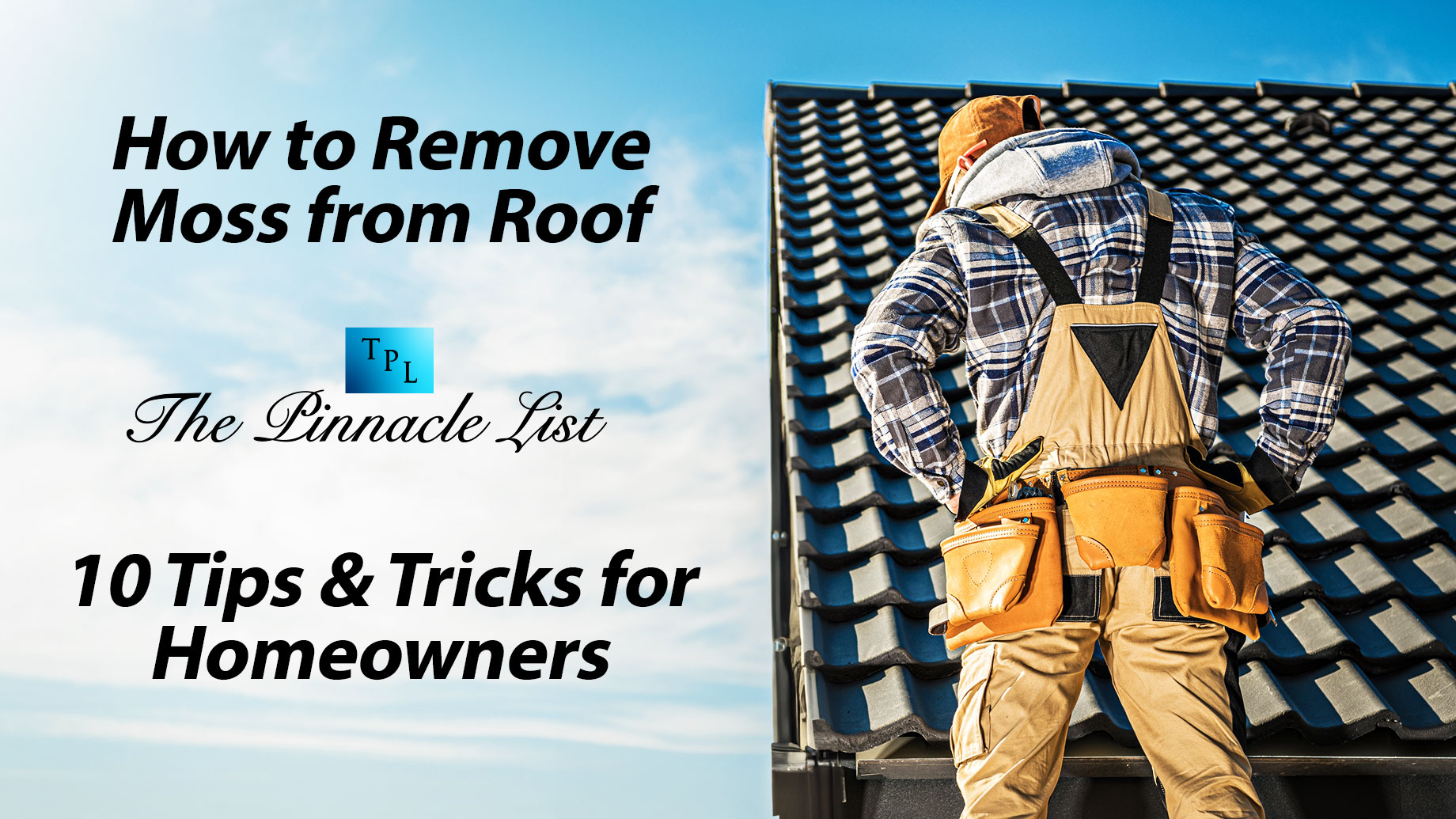
Moss has a knack for trapping moisture against the roof surface, which can lead to damage such as wood rot and compromised shingles. For homeowners, understanding the importance of removing moss is the first step in maintaining the health and appearance of their roof.
1. Safety Precautions
Addressing the issue of moss on your roof requires a keen focus on safety. A humid climate can cause roofs to become slippery, presenting additional hazards during the cleaning process. As you prepare to tackle the moss, homeowners should equip themselves with the proper safety gear. This includes wearing sturdy, non-slip boots to ensure good traction, safety goggles to protect against flying debris, and thick gloves to guard your hands.
A safety harness is also a wise investment, especially when working on higher elevations, typical of a roof Jacksonville style, for example. It’s advisable to have a buddy with you, someone who can keep an eye on your safety from the ground and assist as needed. This partner can also help you stay supplied with tools and materials without having to climb up and down, minimizing the risk of falls. By taking these precautions, you can ensure that your moss removal project is completed without incident.
2. Assessing the Moss Problem
Before you tackle the moss, take a good look at what you’re dealing with. Early signs of moss infestation include green streaks or patches on the shingles, especially on the north-facing or shaded parts of your roof. Determining the extent of moss growth is crucial; it helps you decide whether it’s a quick fix or a full-scale assault. Identifying the type of moss can also be helpful, as different species may require slightly different removal methods.
3. Preparing for Moss Removal
Now, let’s gear up for the task at hand. You’ll need a few tools: a soft-bristled brush, a scraper designed for roofs, and perhaps a garden hose. Check the weather forecast—you’re looking for a cool, overcast day that will keep the cleaning solution from drying out too quickly. Start by clearing leaves, twigs, and any other debris from the roof. This not only gives you clear access to the moss but also removes material that could harbor moisture and lead to more moss growth.
4. Manual Moss Removal Methods
For many, the manual approach is the first line of defense. It’s all about the brush and your technique. Start from the top and gently work your way down the roof, brushing off the moss without damaging the shingles. A scraper can be useful for stubborn patches, but use it with care to avoid tearing or lifting the shingles. Remember, gentle and steady wins the race here.
5. Chemical Moss Removal
If manual labor doesn’t cut it, chemical solutions might be your next stop. There’s a variety of moss-killing products on the market, each with its own set of instructions and precautions. These chemicals can be highly effective, but it’s important to use them responsibly to avoid harm to your landscaping or local waterways. Always follow the manufacturer’s directions closely. Apply these solutions on a calm, dry day to prevent runoff, and protect your plants and lawn with plastic sheeting if necessary.
6. Preventing Future Moss Growth
Once the moss is gone, let’s keep it that way. Regular maintenance is your roof’s best defense against moss. Installing strips of zinc or copper can be particularly effective, as these metals are natural fungicides. Trimming any overhanging branches not only prevents debris accumulation but also increases sunlight exposure, which deters moss growth. And don’t forget to schedule regular roof cleanings to nip any new moss in the bud.
7. Natural and Eco-Friendly Alternatives
For those who prefer a gentler approach, there are natural alternatives. Solutions made from ingredients like distilled vinegar or baking soda can be effective moss killers and are less harsh on the environment. These options may require more frequent application, but they offer peace of mind for those concerned about chemical use. Plus, they can be safer for pets and wildlife.
8. Hiring Professionals
Sometimes, the best course of action is to call in the experts. This is especially true if your roof is steep, high, or if the moss coverage is extensive. Professional roof cleaners have the experience, equipment, and materials to do the job safely and effectively. When choosing a professional, look for licensed and insured contractors with positive reviews and a good track record.
9. Improving Roof Drainage
One of the reasons moss thrives on roofs is due to excess moisture. Ensuring your roof has proper drainage is critical in preventing moss growth. Keep gutters clean and free of debris to prevent water from pooling on your roof. Check downspouts for blockages and consider installing gutter guards to minimize maintenance. Additionally, look for areas where water may be accumulating on your roof and consult with a professional about potential solutions, such as improved flashing or re-angling sections of the roof to promote better water runoff.
10. Monitoring Indoor Humidity
Believe it or not, the humidity inside your home can impact moss growth on your roof. Excessive indoor humidity can lead to condensation in the attic, which can contribute to a damp environment conducive to moss and mold. Ensure your home is well-ventilated, use dehumidifiers if necessary, and check that your attic has adequate ventilation. This will help reduce moisture buildup and can indirectly help prevent moss from becoming a problem on your roof.
Conclusion
Removing moss from your roof is more than a cosmetic fix—it’s an essential part of home maintenance. With the right approach, you can protect your roof and extend its lifespan. Whether you choose manual removal, chemical treatments, or natural alternatives, the key is to act promptly and prevent moss from gaining a foothold. Regular maintenance, combined with proactive measures, will keep your roof strong, functional, and moss-free.